The Rocket Roundup this week features two Chinese launches, including one we couldn’t cover last week, a Russian military satellite launch, and some more Starlink and OneWeb internet satellites. Plus, this week in rocket history, we discuss a groundbreaking mission that sent humans farther from Earth than ever before: Gemini 11.
Podcast
Transcript
Hello, and welcome to the Daily Space. My name is Dr. Pamela Gay and most weekdays the CosmoQuest team is here putting science in your brain.
Today, however, is for Rocket Roundup.
Let’s get to it, shall we?
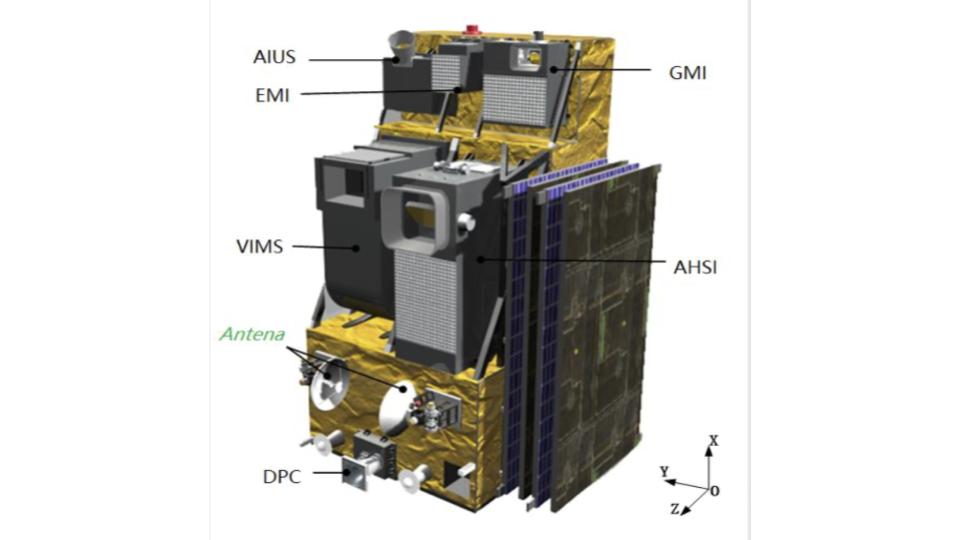
First up, on September 7 at 03:01 UTC, a Chinese Long March 4C launched the Gaofen 5-02 satellite into a sun-synchronous orbit from the Taiyuan Satellite Launch Center in northeast China. Gaofen 5-02 is a replacement for the first Gaofen 5 satellite launched in 2018 under the China High Definition Earth Observation System, a constellation of Earth-observing satellites.
The first Gaofen 5 had six different instruments for measuring several different areas: atmospheric haze, air quality, climate change, and ozone measurement. These were the Advanced Hyperspectral Imager, the Visual and Infrared Multispectral Sensor, the Atmospheric Infrared Ultraspectral Sensor, the Greenhouse-gas Monitoring Instrument, the Environmental Monitoring Instrument, and the Directional Polarization Camera.
That’s a lot of sensors, but very simply, they are measuring different indicators related to air pollution and climate change. For example, there are sensors that measure ozone, atmospheric haze, and greenhouse gases including methane, nitrogen dioxide, and carbon dioxide.
One of the sensors called the Atmospheric Infrared Ultraspectral Sensor (AIUS) looks at the light from the Sun as it passes through the atmosphere where the Earth is occulting (or blocking) the Sun. As the satellite orbits the Earth, it can point the AIUS at the Sun and measure the light as it passes through different layers of the atmosphere. From this, it determines the temperature, pressure, and percentages of different gases such as water vapor, ozone, carbon dioxide, and nitrogen dioxide at different altitudes.
Gaofen 5-02 marked the 30th Chinese launch of the year.
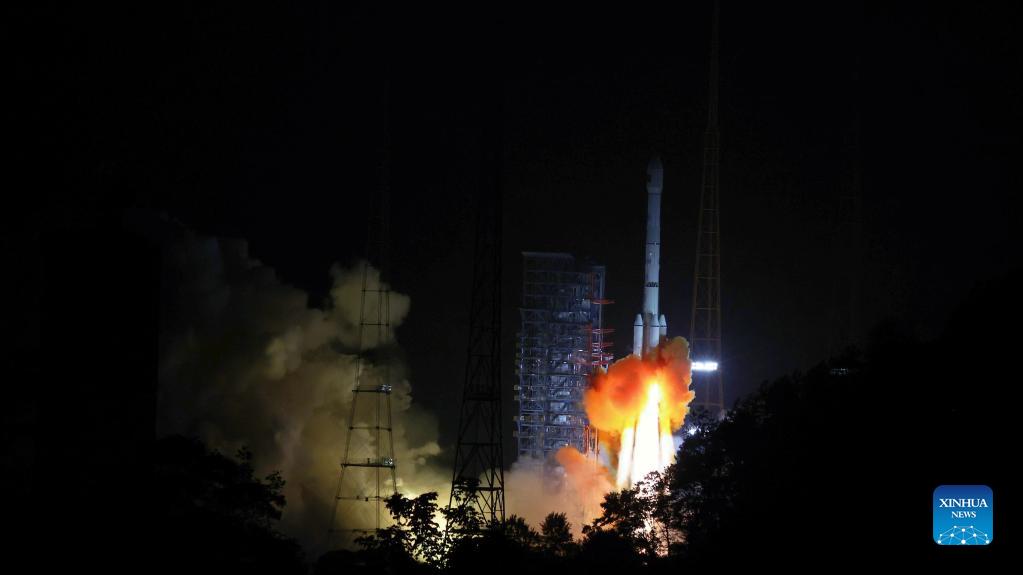
Now, let’s talk about the 31st Chinese launch in 2021. On September 9 11:01 UTC, a Chinese Long March 3B launched the Chinasat 9B satellite into geostationary transfer orbit from the Xichang Satellite Launch Center in China. After separation, the satellite successfully deployed its solar panels and began communicating with the ground.
The manufacturer was fairly open with what the mission of Chinasat 9B is, which is not something we often see with Chinese government satellites; it will provide radio and live television transmission. Compared to Chinasat 9A, 9B has new transponders that will allow it to broadcast 4K and 8K video, particularly for large sporting events such as the upcoming Winter Olympics which will be held in Beijing in February 2022. Once in orbit and tested, the satellite will be transferred to China Satellite Communications, the state Satcom operator.
A few hours later at 19:59 UTC, a Soyuz 2.1v launched the Razbeg satellite into a 300km sun-synchronous orbit from the Plesetsk Cosmodrome in northern Russia. Razbeg is a small optical remote sensing satellite weighing 250 kilograms. It has a Ritchey–Chrétien type telescope, which is a design that eliminates aberrations across a large field of view and is used in almost all research telescopes today.
The telescope has a sensor capable of providing sub-meter ground resolution from a 300-kilometer orbit. It replaces the technology demonstrator “experimental small space apparatus”, or EMKA, which launched in 2018 and operated until earlier this year. Once Razbeg was in orbit, it was given the designation Kosmos 2551. The launch was delayed from late July 2021 for unknown reasons.
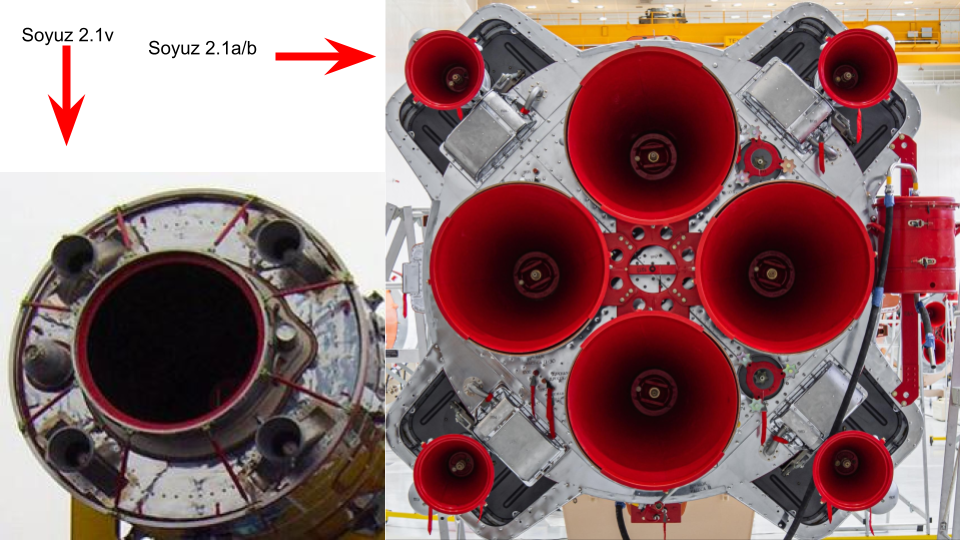
The launch vehicle for Razbeg, the Soyuz 2.1v, is a distant cousin of the usual Soyuz 2.1a or b we see used for most Soyuz launches. Unlike its cousins, the Soyuz 2.1v rocket lacks the four boosters of the regular Soyuz which produce its distinctive Korolev Cross. The usual first-stage engine is replaced with a 50-year-old engine that was originally built for the unsuccessful N1 Soviet Moon rocket. On the Soyuz 2.1v, that vintage engine is augmented with a vernier engine derived from the Soyuz second stage. The smaller vernier engine provides roll control on the first stage of the 2.1v since the main engine can only control pitch. For comparison, the regular Soyuz first-stage engine has four fixed nozzles and four vernier nozzles plumbed into the same turbopumps to provide pitch, yaw, and roll control after the boosters separate. The two rockets have the same second stage.
On September 14 at 03:55 UTC, the Starlink Group 2-1 mission launched atop Falcon 9 booster 1049 from SLC-4E at Vandenberg Space Force Base in California. This was the tenth flight for Booster 1049, which successfully landed on the drone ship Of Course I Still Love You, making its first catch since being moved to the west coast several months ago. B1049 is only the second Falcon 9 first stage booster to make ten flights.
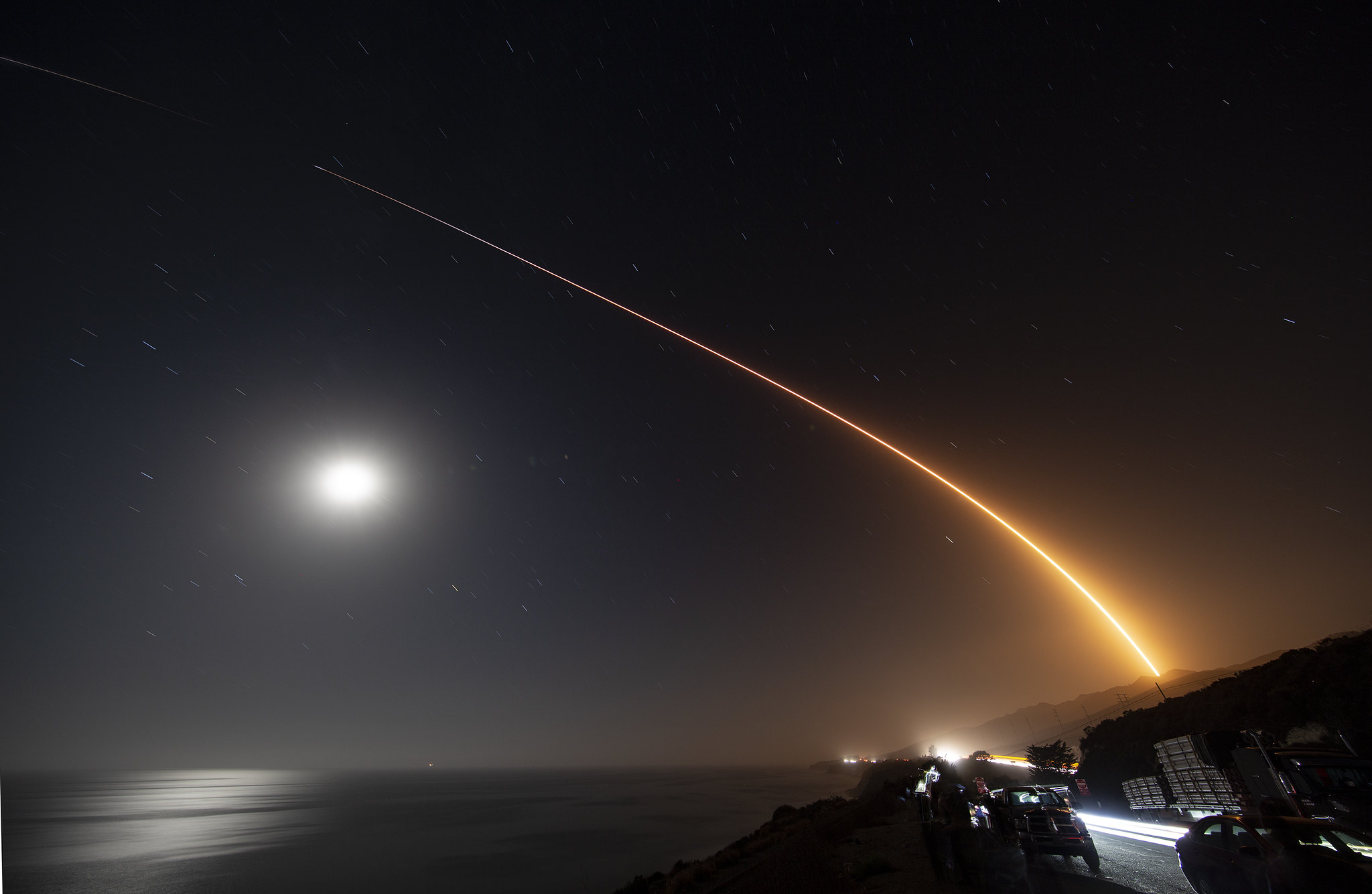
Both of the fairings were reused, one making its second flight and the other its third. This was the 24th mission to use reused fairings, and the 43rd and 44th reused fairings, according to the webcast. They were successfully fished out of the water by NRC Quest, the west coast fairing retrieval boat. All 51 satellites were successfully deployed into orbit several minutes after launch following a single second stage burn.
SpaceX launched these satellites from Vandenberg because it allowed them to put the satellites into a higher inclination orbit needed to provide coverage at higher latitudes. The tradeoff for this is that more fuel is needed to achieve the higher inclination orbit so the maximum payload is reduced, hence there being only 51 satellites rather than the usual complement of 60. As well, these satellites have been upgraded to include laser communication links, so they are slightly heavier than the previous model of Starlink satellite.
For some reason, probably to mess up our tracking spreadsheet, SpaceX changed the naming scheme used for the first 28 Starlink launches to a different one for the launches in this new shell. These satellites are going into 70-degree inclination orbits at roughly the same altitude as the first 1,678 satellites which went into 53-degree inclination orbits. There will be roughly the same number of satellites in this shell as the first one. While it is technically possible to launch into a 70-degree inclination orbit from Florida with the new southern dogleg trajectory, it is even easier to do this from Vanderberg, so SpaceX can launch satellites for the new shell from both coasts.

Our last launch this week took place on September 14 at 18:07 UTC. Arianespace, and its affiliate, Starsem, launched a Soyuz 2.1b/Fregat from the Baikonur Cosmodrome in Kazakhstan.
The launch was conducted from Pad 31/6. Onboard the Soyuz were 34 satellites for the OneWeb 10 mission or Flight ST36 in Arianespace numbering. The rocket’s Fregat upper stage conducted several engine burns over the course of two and a half hours and then inserted the 36 satellites into the target orbit in several sets, bringing the number of satellites in the constellation to 322 satellites of a planned constellation of 648 OneWeb satellites, meaning it’s just over 49% complete.
This launch marks the 1,945th Soyuz launch since its debut 64 years ago.
This Week in Rocket History

This week in rocket history is Gemini 11, a mission that set not one but two records that still stand today: highest altitude reached by a human in Earth orbit and shortest time between launch and docking.
The mission goals were to demonstrate fast docking, required by the Lunar Module on its ascent from the Moon, and gain more experience performing spacewalks. Secondary goals were to demonstrate artificial gravity and perform some onboard experiments and astronomy.
Gemini 11 launched on September 12, 1966, at 14:42 UTC. Its docking target, Gemini Agena Target Vehicle (GATV) 11 was launched ninety minutes earlier. Six minutes after launch, astronauts Richard Gordon and Pete Conrad were in orbit and quickly got ready to perform five rendezvous burns to meet up with the Agena. One hour and 25 minutes into the mission, they docked with the Agena. Once docked, each astronaut performed two docking demonstrations, before riding the Agena into a slightly higher orbit. This concluded the first day of the mission.
On the second day, September 13, astronaut Gordon performed the mission’s first spacewalk. He was supposed to attach a tether from the Agena onto the Gemini for a later artificial gravity demonstration and test out a new space power tool in the process. However, the exertion of moving the tether caused sweat to build up in his suit, and he was blinded in one eye. He was ordered back into the spacecraft without attempting the power tool demonstration. This concluded the second day of the mission.
The third day of the mission, September 14, was the most important.
The Agena fired its engine for 25 seconds, sending Gemini 11 into an orbit with a 1,374-kilometer apogee, setting the first record for the mission as this is the highest altitude a crewed mission has been in Earth orbit. After two revolutions in this extended orbit, the Agena fired again to lower Richard and Pete back into their prior orbit.
Now it was time for another EVA, again by Gordon. This time he didn’t leave the spacecraft, instead just standing up out of the hatch. He took photographs for two hours and then closed the hatch and repressurized the spacecraft.
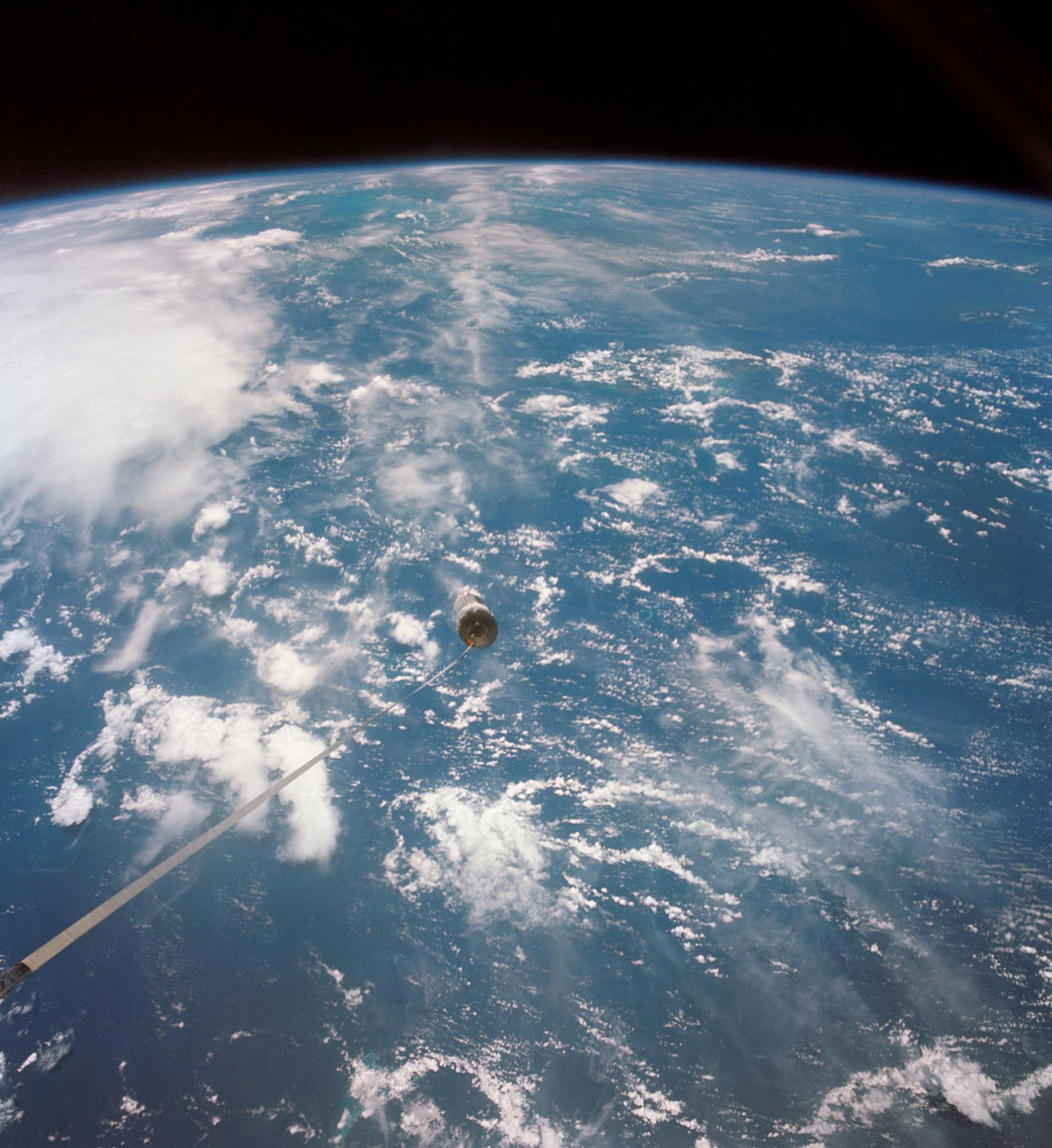
Then it was time for the artificial gravity demonstration. Gemini undocked and backed away to the length of the tether, which was thirty meters. Astronaut Conrad initiated a slow rotation of the coupled spacecraft with the Gemini’s thrusters, keeping the tether taut.
Initially, the two spacecraft wobbled around, but after twenty minutes it was under control. This cycle of increasing rotation and oscillation followed by damping, or smoothing out of the wobble, was repeated several times until the combined spacecraft had a slight artificial gravity of 0.00015g measured on Gemini. The experiment was maintained for about three hours after which the Gemini undocked.
It demonstrated for the first time in space the problems of simulating gravity – nothing is held in place, so one or both of the things at the ends of a tether will wobble freely in a random direction. Also, the amount of artificial gravity they were able to produce was so small – just 0.015% of that on Earth – that it wasn’t useful.
At 08:22 UTC on September 15, Gemini 11 docked to the Agena for the final time. This final docking was completed manually after the rendezvous radar malfunctioned.
After 44 orbits around the Earth, Gemini 11 performed its deorbit burn. The reentry was another first: the first completely computer-controlled guided reentry of the U.S. space program. Splashdown was at 12:59 UTC on the 15th, bringing the mission to a close after just over 71 hours in space. All primary mission objectives were completed despite a few malfunctions and the mission even got a bonus docking due to extra propellant.
Statistics
To wrap things up, here’s a running tally of a few spaceflight statistics for the current year:
Toilets currently in space: 8: 4 on ISS, 1 on the Crew Dragon, 1 on the Soyuz, 1 on the Shenzhou, and 1 on Tianhe.
Total 2021 orbital launch attempts: 88, including 7 failures
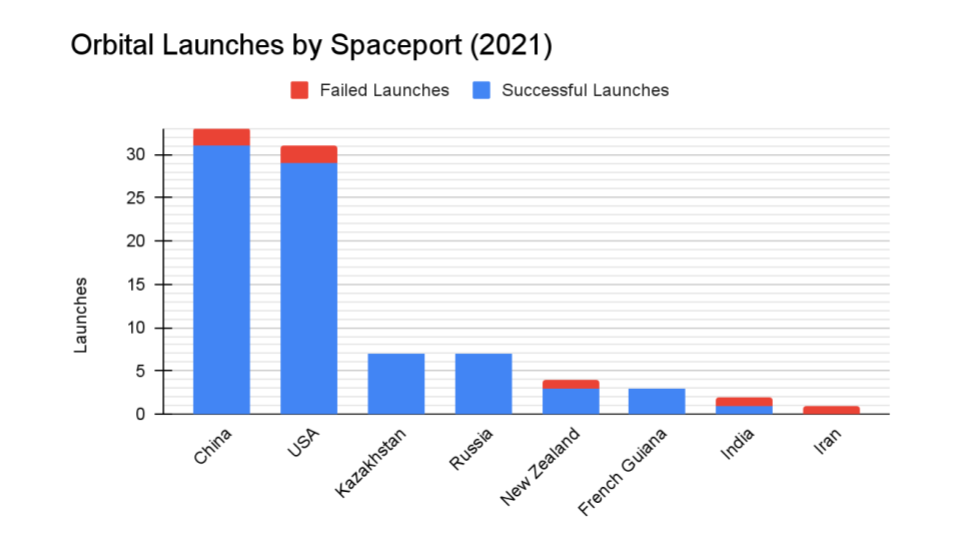
Total satellites from launches: 1370
I keep track of orbital launches by where they launched from, also known as spaceport. Here’s that breakdown:
China: 33
USA: 31
Kazakhstan: 7
Russia: 7
New Zealand: 4
French Guiana: 3
India: 2
Iran: 1
Your random space fact is that, in September 1962, a piece of the reentering Korabl-Sputnik 1, the first uncrewed Vostok spacecraft, landed in a street in Manitowoc, Wisconsin. Now, every year in early September, the city hosts Sputnikfest commemorating the event. This year, it was held on Saturday, September 11th.
This has been the Daily Space.
You can find more information on all our stories, including images, at DailySpace.org. As always, we’re here thanks to the donations of people like you. If you like our content, please consider joining our Patreon at Patreon.com/CosmoQuestX.
Learn More
China Launches Environmental Monitoring Satellite
- CASC press release (Chinese)
- PDF: Mission Overview GaoFen-5 (CEOS)
- Gaofen 5 info page (Gunter’s Space Page)
- Launch video
Beijing Winter Olympics Gets New High-Def Satcom
Russian Space Forces Launch Remote Sensing Satellite
More Starlink Satellites, This Time From California
- Starlink Group 2-1 mission page (SpaceX via archive)
- Launch video
OneWeb 10 Adds Another 36 Satellites to Constellation
This Week in Rocket History: Gemini 11
Credits
Host: Pamela Gay
Writers: Nick Castle, Gordon Dewis, Pamela Gay, Erik Madaus, and Annie Wilson
Audio and Video Editing: Ally Pelphrey
Content Editing: Beth Johnson
Executive Producer: Pamela Gay
Intro and Outro music by Kevin MacLeod, https://incompetech.com/music/


 We record most shows live, on Twitch. Follow us today to get alerts when we go live.
We record most shows live, on Twitch. Follow us today to get alerts when we go live.